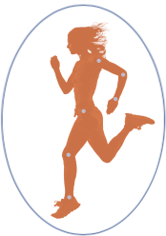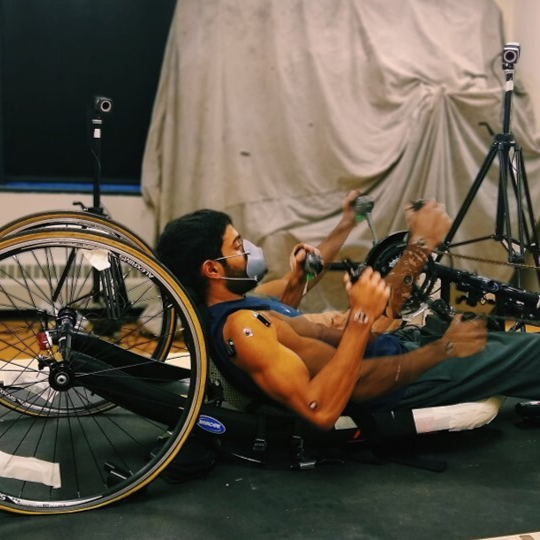
In addition to bone and tissue biomechanics, we study whole body biomechanics and the relation between movement and joint angles, torques, and muscle forces. This work usually includes using motion capture, force plates or load cells, and inverse musculoskeletal models.
 | Reducing Cardiovascular Disease and Shoulder Pain in Wheelchair Users Wheelchair users are at high risk for cardiovascular disease (CVD). High intensity interval training (HIIT) can decrease risk of cardiovascular disease, but it increases the risk for shoulder injuries. This is alarming because 3 out of every 4 wheelchair users already report upper body pain. We pose the question: what exercise regimens could reduce the risk of CVD without increasing the risk of shoulder injury in wheelchair users? We acquire motion capture, EMG, and magnetic resonance imaging (MRI) data in wheelchair users performing high and moderate intensity handcycling exercises to quantify risk and determine the safest modes of exercise for wheelchair users. Check out our YouTube channel for some exercise and modeling videos! Contributors: Kellie Halloran, Michael Focht Collaborators: Dr. Ian Rice (UIUC, Kinesiology), Disability Resources and Educational Services (DRES), Dr. Joseph Peters (Kinesiology, DRES) Funding: National Science Foundation, UIUC MechSE Department, American Society of Biomechanics |
||
 | Field-Based Biomechanics and Exercise Recommendations for Wheelchair Users Finding an accessible exercise mode that promotes cardiovascular and musculoskeletal health requires being able to collect data in the environment that wheelchair users will be exercising in at home. To do this, we are developing a field-based biomechanics data pipeline that uses video data, a smartwatch, and machine learning, all in an open-source format to collect the same data we can collect in the lab out in the real world. Doing this allows us to ask questions like: 1.) What exercise modes are the most safe and accessible for wheelchair users? and 2.) How should exercise be prescribed for wheelchair users, and how can we monitor exercise at home? Contributors: Griffin Sipes Collaborators: Dr. Ian Rice (UIUC, Kinesiology), Adam Bleakney (UIUC, Disability Resources and Educational Services), Disability Resources and Educational Services (DRES) Funding: National Science Foundation |
||
